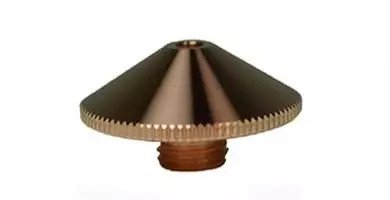Being a fabricator is difficult and there are so many things you should know about it before you invest into the machine. Like which brand of machine to purchase, what type of designs you should create, understanding users’ requirements. All of these factors play a very important role.
Thousands of questions arise when you have to purchase one laser engraving machine. Not only this but there are thousands of companies also with their variety of laser machines so it is very obvious to get confused.
To overcome this confusion, in today’s article, we will discuss some of the things you must consider before purchasing laser engraving machines.
1. Do thorough research
I can understand laser engraving machines are a big investment and each of the brands has their own types of machines. These machines are different in size, powers, and functions so as a fabricator you need to know what is the function and purpose of these machines and what are your requirements.
Some machines are suitable for production while some are not suitable because of their speed. Big machines let you cut and engrave bigger items, so here you need to have clarity upon what you want your machine to do.
As a fabricator, it is your job to do thorough research on suppliers and distributors of laser machines in your area. Find and make a list of companies who are well known, the cost of spare parts, laser machines, and their customers’ ratings.
Make sure that you are not using machines that have rusty spare parts. While purchasing the laser engraving machine make sure that spare parts are of some well-known companies like Mazak parts and Mitsubishi machine parts so it is easy to replace them as and when required.

2. Location of machine
Location or place where you want to set up a machine is a very important part for you to work efficiently. You need to be sure about the weather, environment, market, place, power supply, and many such things. Add more equipment like compressor, air filter, computer, suction, water drainage, and many more. Additionally, make sure that the machine is dust-free and cools with air conditioning as it generates extreme heat.
Lastly, make sure that machine has an earthling cable as most laser machines generate power based on an electric laser tube. You need to release the tube of its electric tension. If there is no earth cable then the tension on the laser tube will break within a year.
3. Compressor is an important part
Laser machines need a compressor and for this, you need to make sure that your supplier has technical knowledge about this. The type of compressor you need depends on different factors like humidity, size of laser machine, power supply requirements, and many others.
It is the supplier’s responsibility to help you set up the machine including air compressor, suction, and drainage as they know the correct steps. You need to purchase machines according to the place you stay in. Suppose, you are staying in a place that is humid then make sure the machine has an air dryer or cleaner. Also remember to timely replace spare Mazak parts and Mitsubishi machine parts.
You might know that the air which blows inside of the machine is clean and dry as there are some compressors that produce oil and water in the air. Remember oil and water is not good for your machine as the laser will stick out of your lens and as a result, the lens will turn blurry. This will eventually result in having imperfect laser engraving experience and will make a hole in the lens.
Lenses are very costly so avoid playing with it.
4. Water Management System
If you are living in a humid country then your compressor will exhale plenty of water. It stores in a compressor or the air compressor tank. Make sure to empty the water storage everyday either on an hourly or daily basis. Hence, in some countries, you can install an auto drainage system on compressors or air tanks. This device automatically empties the water storage so it never gets full and you can also keep your machine running. I will say, it is not important to have it but is one of the essential parts of the ecosystem around your machine.
Final Words:
I can understand purchasing a laser machine can be a very big investment as there are many risk factors included. You just need to make sure of the above four discussed points as it will help you to make better decisions, work more efficiently with your clients, and increase your productivity. I am saying it again make sure that your supplier uses known parts like Mazak parts and Mitsubishi machine parts so it is easier for you to replace them.





